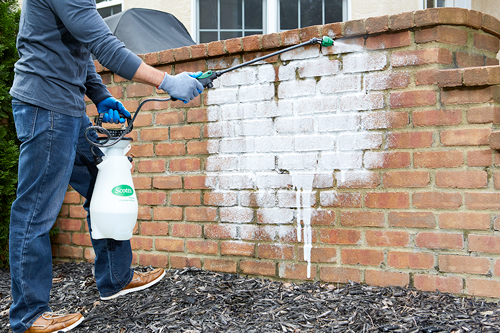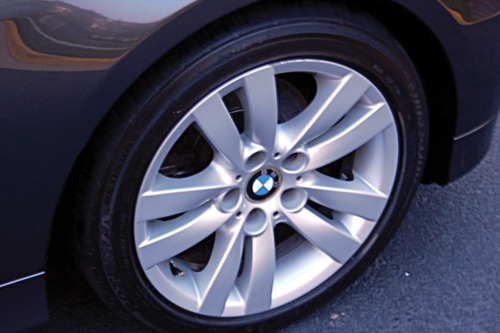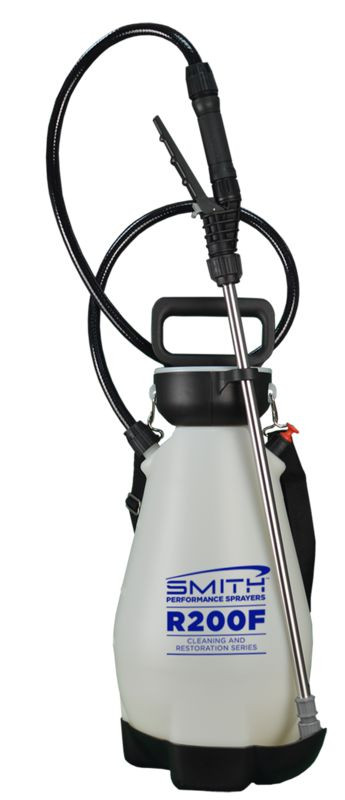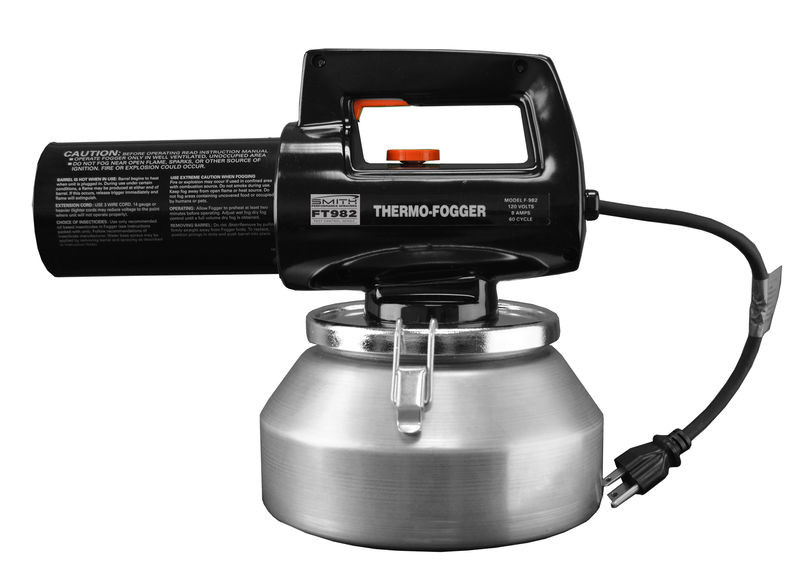















Featured Sprayers |
| Tank Capacity |
| Wand Type |
| Brand |
| Tank Material |
| Warranty |
| Nozzles |
Smith Performance™ R200F 2-Gallon Foaming Compression Sprayer, Model 190456 |

SKU # 190456 Price: $64.99
|
| 2 Gallon |
| 21" Stainless |
| Smith |
| Poly |
| 1 Year Limited |
| 4 nozzles: poly adjustable, 2 flat |
Smith Performance™ FT982 Electric Thermal Fogger, Model 190443 |

SKU # 190443 Price: $299.99
|
| 1 Gallon |
| N/A |
| Smith |
| Aluminum |
| 1 Year Limited |
| N/A |
The shut-off lock might be engaged. Squeeze shut-off handle (red, yellow, or green), then slide it back towards the sprayer to disengage the lock. The handle should pop up to stop the spraying. If this does not fix the issue, the shut-off assembly might need to be replaced.*
There may be dirt or debris stuck under the pump check valve. Remove the pump from the tank and locate the check valve at the bottom of the pump. It can be easily removed, washed and put back into place. If you notice it is damaged, worn, or misshaped, it will need to be replaced by ordering a pump service kit.*
There may be dirt or debris in the shut-off valve, which is located inside the handle. Loosen and remove the black knob on the bottom of the shut-off. You might need a pliers to loosen it initially. Remove the spring and flush water through the opening to remove any blockage that might be present. If this does not fix the issue, the shut-off assembly will need to be replaced.*
Inspect the pump check valve. Depressurize the sprayer and remove pump from the tank. Locate the check valve at the bottom of the pump (See Figure 3). Make sure there is no dirt or debris underneath the check valve. It can be easily removed, washed and put back into place. If you notice it is damaged or worn, it will need to be replaced by ordering a pump service kit.